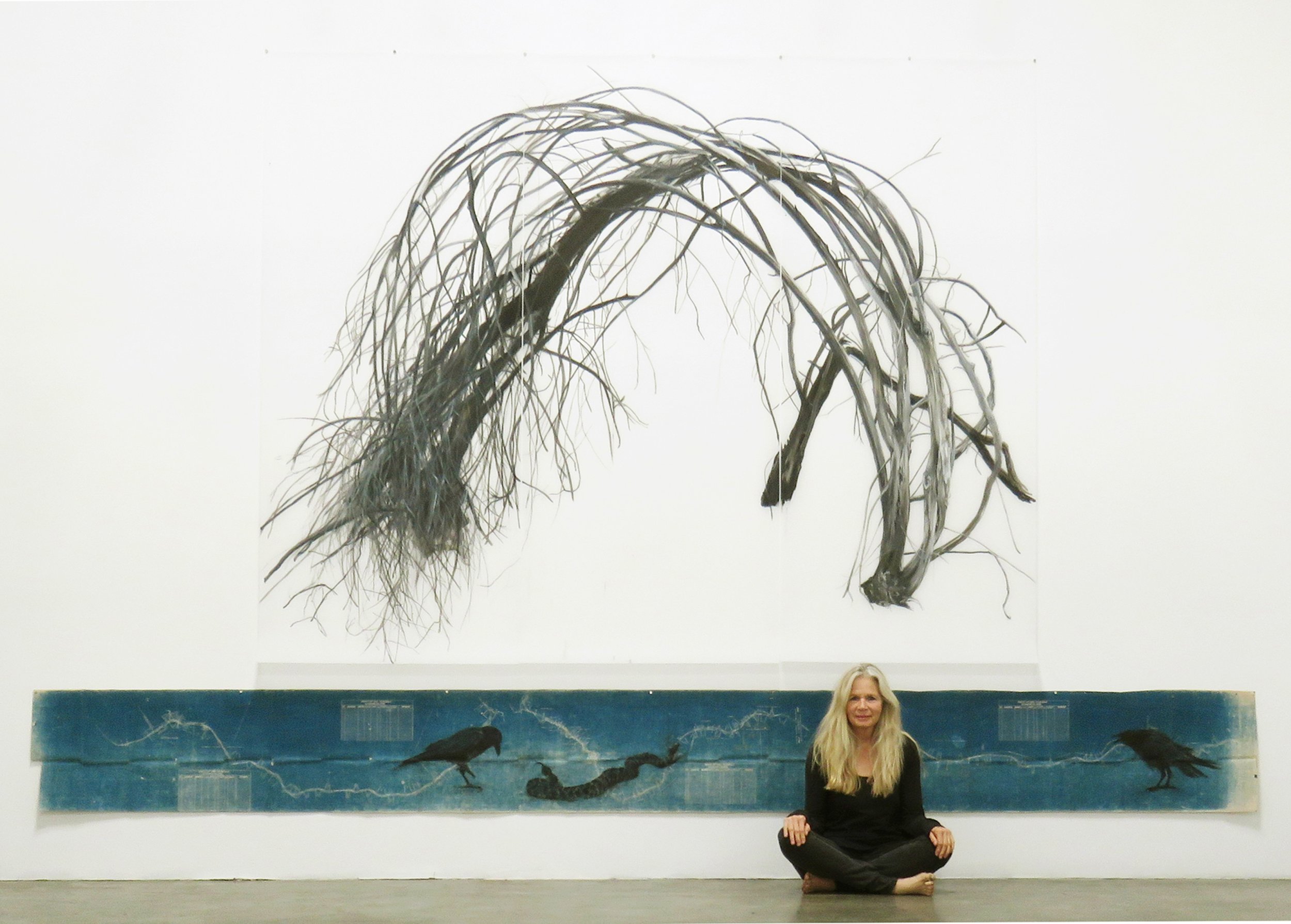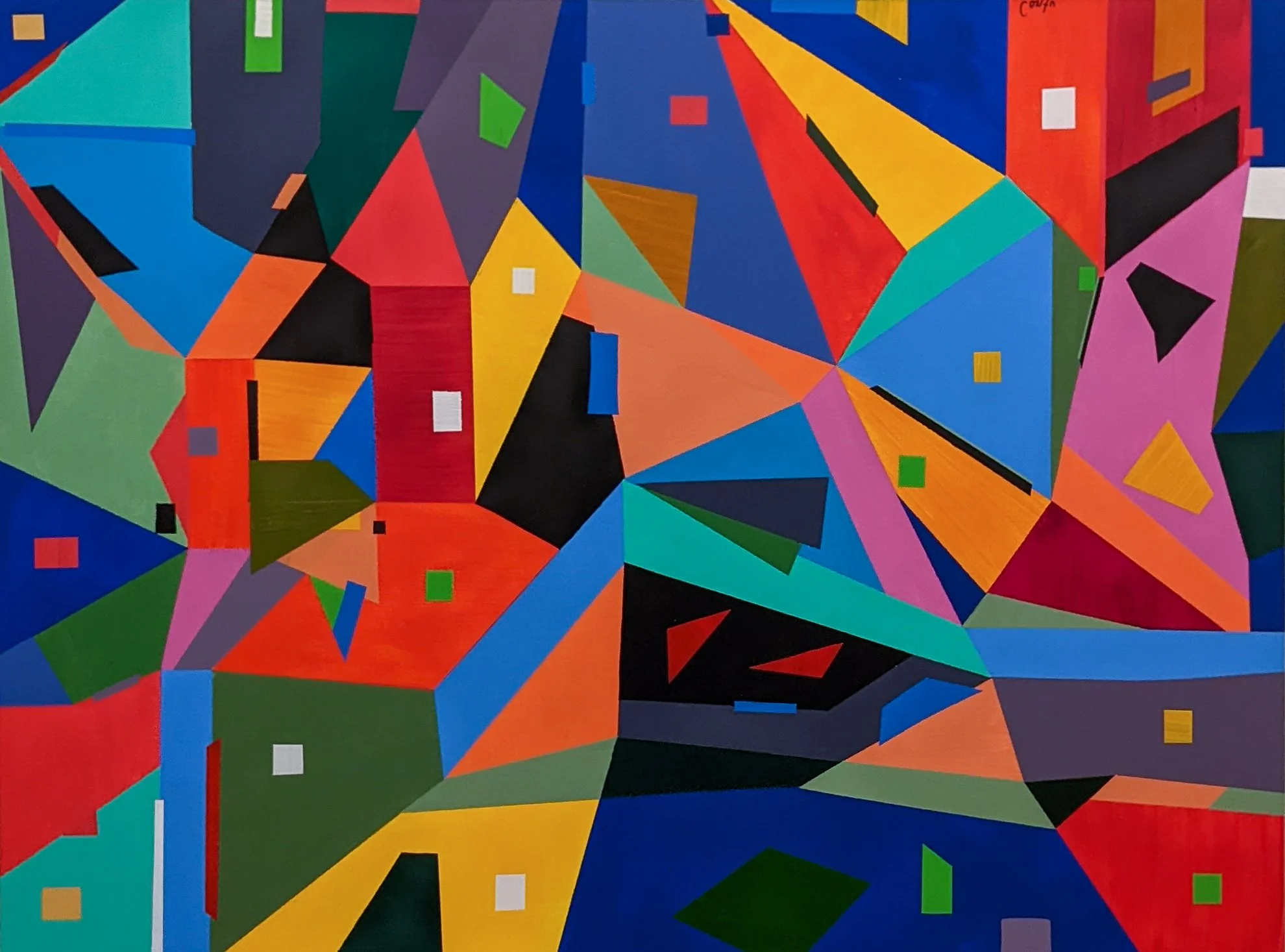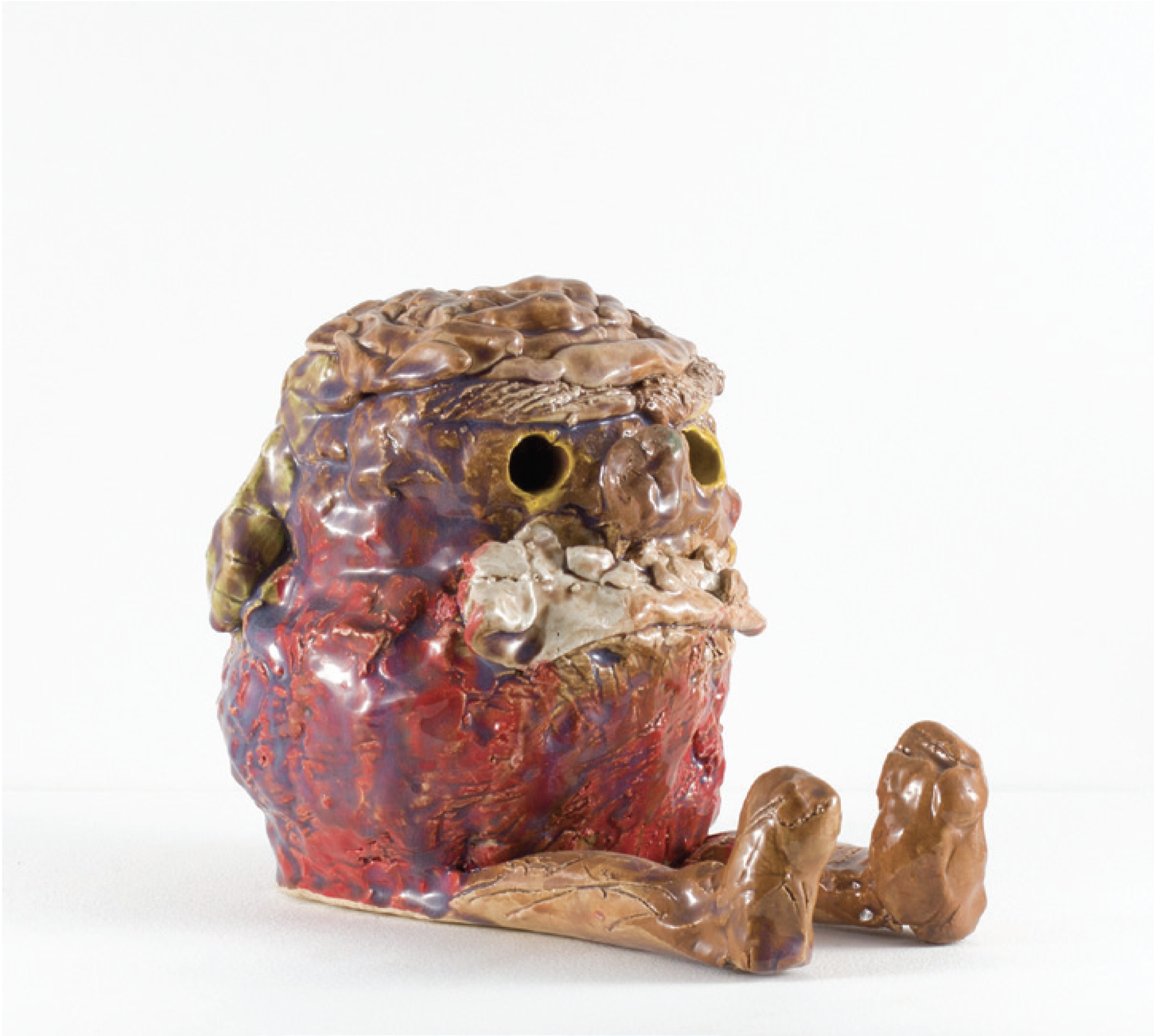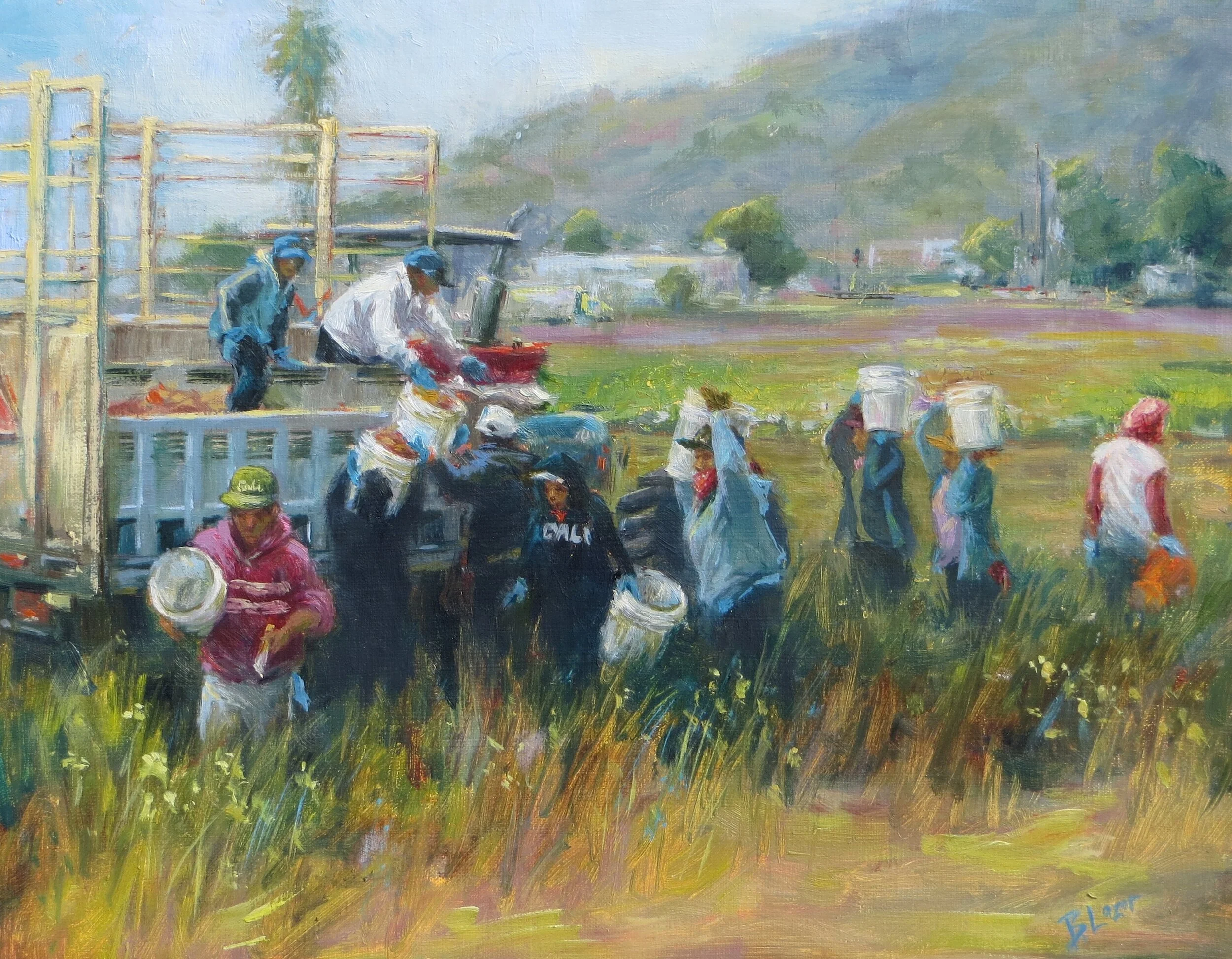Fieldnotes: Lynn Hanson
There’s nothing quite so unnerving than to step out the front door and discover a coiled rattlesnake. The snake, of course, is minding its own business. If you’re lucky, it’s digesting a recently dispatched rodent and feeling a bit sluggish, while you carefully reenter the safety of the house.
A flash of dread returns entering Lynn Hanson’s comprehensive Fieldnotes show at the Santa Paula Art Museum when confronted in the entry by a pair of her life size rattlesnakes in charcoal.
On closer look (if you dare) the 3D illusion of each snake is pumped up by convincing shadows, drawn on vintage 2D road maps. The smaller black and white piece, Rattlesnake Canyon, has the more menacing of the two creatures horizontally arranged over a simple 1920s’ “Santa Barbara and Vicinity” street layout that includes Rattlesnake Canyon Road. The other snake is stretched across a long and colorful California highway map from 1930, headed north the entire length of the State, and titled California Roadtrip: Salvation Mountain to Mount Shasta.
Hanson collects old maps, including star charts, as seen in a number of works. It started with an old Atlas, she said, “the feel of the paper … the yearning for a road-trip, the undercurrent of rivers and roads like veins beneath the drawn figure, and the delight of seductive place names like Devil’s Postpile”.
Lynn Hanson, Calfornia Roadtrip: Salvation Mountain to Mount Shasta, charcoal on 1930 highway map of the State of California, 42 x 16, 2022
Lynn Hanson, Heavenly Bodies, charcoal on antique celestial map, 9.5 x 17.5, 2020
Take Heavenly Bodies, a rich black charcoal of a crow, sketched in profile, contemplating the ground for treasure to collect or morsel to consume, interwoven within an antique German celestial etching of two side-by-side views of the Northern Hemisphere’s night sky.
As a child in Minnesota, Hanson was always longing to be outside, often late to school, distracted by the wonders of the natural world. Crows were there, too. Years later they were outside her small Venice California studio. “They’re ubiquitous, she said, like the stars and meteor showers she still chases on camping trips.
In Geography of the Heavens and Nativity, each piece is mostly black, a singular half round shape sprinkled with pinpoint specs of light, evoking the reverence of a church window: “nature as sanctuary.” Across the gallery, the larger Dreamhouse hangs loose from notebook clips, the expansive dark semicircle of the firmament a backdrop for a small ghostly tent anchored at the horizon’s center.
Hanson picks up the theme of tents, shelter and coverings in one of the large works, Hazard Canyon, a monochromatic oil across three, large, hanging sheets of translucent drafting film. It depicts a shelter with the luminous quality of bleached bones. A thick branch runs in a long diagonal from the lower left to upper right supported by a tangle of tent like lesser branches and twigs.
Lynn Hanson, Shroud, Oil on drafting film, 40 x 72, 2010.
When hiking, Hanson sometimes envisions spaces like these as portals to other worlds, like the closet in C.S. Lewis’s The Lion, Witch, and the Wardrobe. Lately she feels a return to her 10-year-old “authentic self,” ruminating on the relics she finds.
Thinking of the experience of school kids visiting her Fieldnotes and wanting to engage them, she filled two waist high museum display cases, Curiouser; and … Curiouser, with an exotic collection of beach finds, old guidebooks and artwork. Hanson calls her source for the display a “intertidal lending library.”
“Cyanotypes, rodent skulls and mandibles from owl pellets, mermaid purses (shark egg cases), hagstones on seal bone, 1916 pocket The Butterfly Guide, charcoal crow drawings on vintage annotated book pages, sand dollars, monarch, cabbage butterfly, dragonfly, spider crab shell, bushtit nest in eucalyptus branch, shorebird feathers, vintage Ventura County map, antique German celestial chart, abalone shell fragment with small shells, rattlesnake drawing on waxed dictionary page, branch with lichen, seagull skull, ‘noche’ charcoal drawing on vellum.” —Gallery label excerpt
Nearby, Shroud, a large horizontal oil on drafting film, depicts a dead pelican caught in a tangled string of kelp. Like the turning of the earth, the movement of the stars and the changing of the tides, Lynn Hanson reflects on the natural order of things.
Lynn Hanson pictured with her piece, The Long Way Home, oil on drafting film, charcoal on 1916 railroad blueprint, 117” x 192”, 2017; LACMA / Los Angeles County Museum of Art 2021 acquisition, permanent collection.
Fieldnotes / Lynn Hanson is on view at the Santa Paula Art Museum through July 10, 2022.










